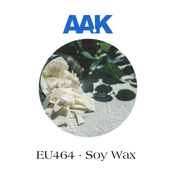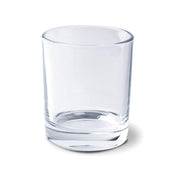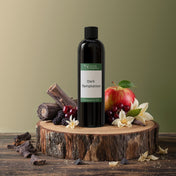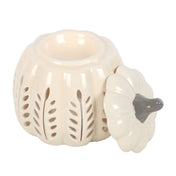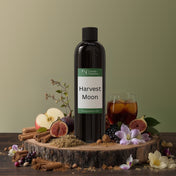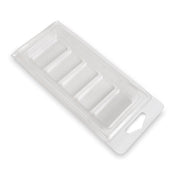Burning candles holds the power to evoke memories, create ambience and infuse a sense of tranquillity into your space. But are candles bad for you? The short answer is no, under normal conditions of use, candles pose no health risk. However, with their use comes responsibility, and candle safety goes beyond not leaving a lit candle in a vacant room.
Whether you’re a DIY enthusiast making candles at home, the owner of a home fragrance brand looking to strengthen your candle business, or simply someone who enjoys the glow and aroma of a good candle, understanding the ins and outs of candle safety is crucial.
We’ve got the lowdown for you when it comes to crafting and burning handmade candles. Read on for making tips, or if it’s just the burning specifics you’re after, skip ahead!
Safety When Making Candles
Candle-making marries creativity with caution. It’s not only an art but a science that requires attention and care. Here are some candle-making tips to protect your safety:
Workspace Setup
Ventilation is key in your workspace. A well-ventilated area ensures that any fumes or potential irritants are efficiently cleared out. This not only safeguards against inhalation hazards but also ensures your candle has a clean environment to set in.
Temperature Monitoring
Wax has specific melt points. Using a thermometer is not just about avoiding overheated wax and potential fires; it's also about ensuring the consistency and quality of your candle. Different fragrances or colourants might require specific temperatures, so make sure to do your research before you begin the melting process.
Water Hazards
Introducing water to melted wax isn't just a splatter risk. Water can cause the wax to sputter or bubble, which can result in an uneven candle or even pockets of trapped steam that can be hazardous when the candle burns.
Safety & CLP Labels
Think of candle safety labels as your final touch of care. By attaching labels with safety instructions and the correct CLP information (provided for all of our scents) to your homemade creations, you're providing essential guidance to the end user. It's a sign that your brand prioritises safety over everything. Not sure what to include on your label? The British Candlemakers Federation have you covered with this handy advice pack. And don’t forget, if you need more guidance on the candle-making process that goes beyond the safety implications, check out our dedicated page on our website.
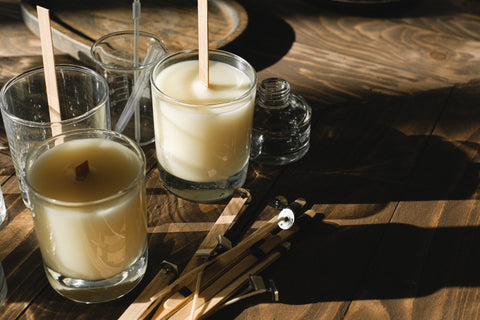 Selecting Safe Ingredients
Selecting Safe Ingredients
In the realm of handmade candles, the ingredients not only can make or break their aesthetic and burn quality but also their safety profile. With various waxes available, understanding their properties and potential implications becomes paramount. Let's delve deeper into some of the most popular waxes and their associated safety concerns.
Paraffin Wax
Origin and Usage: Paraffin wax, derived from the refining process of petroleum, is one of the most commonly used waxes in candle-making. Its popularity stems from its affordability, accessibility, and ease of use. The wax provides a smooth finish and consistent burn, making it a staple for many commercial candle manufacturers.
Debates and Concerns: "Is paraffin wax toxic?" is a question that has been circling for quite some time now. Some studies suggest that burning paraffin candles can release harmful chemicals like toluene and benzene into the air. These are volatile organic compounds (VOCs) that, in concentrated amounts, may have health implications.
It’s important to note that the levels emitted from candles are generally much lower than the levels that could cause health concerns. And if candles are properly cared for and maintained, the risk is even lower. However, for those who are particularly cautious, or for spaces with limited ventilation, it might be worth considering alternative waxes.
Soy Wax
Origin and Benefits: Soy wax is a newer entrant in the candle-making world compared to paraffin. Derived from the oil of soybeans, it's a renewable resource, making it a favourite among eco-conscious consumers. Apart from its environmental credentials, soy candles are known for their longer burn time and minimal soot production, ensuring your walls and ceilings remain cleaner.
Debates and Misconceptions: When addressing a burning question among candle enthusiasts: "why are soy candles bad?", is often a case of misinformation. Some argue that soy farming can have environmental drawbacks or that genetically modified (GM) soybeans are a concern. While these are broader agricultural issues, the fact remains that soy wax, in its essence, offers a cleaner and potentially healthier burn compared to paraffin.
Coconut Wax
Extracted from the raw material of coconuts, coconut wax is a staple in candle safety, and it’s gaining traction for its sustainable properties. It offers a slow, even burn and is typically blended with other waxes, like rapeseed, to enhance its burn quality. Additionally, coconut wax boasts a rich and creamy colour, often requiring less dye, if any. The bottom line? This natural wax is 100% toxin-free, making it a fool-proof option for conscious candle makers.
Each wax type, with its unique properties and potential implications, underscores the importance of understanding the materials you’re working with, ensuring the safety and quality of the candles you create or purchase. All waxes are completely safe, but some require the end user to follow more rigid care and maintenance rules.
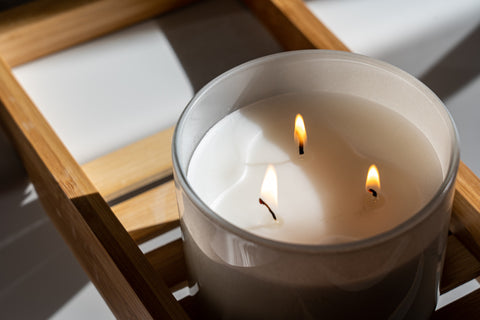
Burning and Maintaining Your Candle Safely
Candle-crafting complete, now it’s essential to ensure it’s used safely. The burning and maintenance rituals users adopt can impact both the longevity of the candle and the safety of their surroundings. Here's a comprehensive look at what users need to be attentive to.
Burn in a Safe Place
Is it safe to burn candles indoors? Absolutely, with the right precautions. While candles do add a certain charm near windows or on coffee tables, these might not always be the safest spots with them being close to curtains and other flammable objects that could catch fire.
It’s also worth considering that drafts can cause a candle to burn unevenly, creating more soot and potentially posing a fire risk. High-traffic areas, like hallways or near doorways, also pose the risk of the candle being knocked over accidentally. The ideal location? A stable, heat-resistant surface away from pets and children.
Burn for the Right Amount of Time
Unbeknown to a lot of people, how long you let your candle burn matters. Here's a straightforward rule: a candle should burn for about one hour for every 2.5cm of its diameter. For a 5cm wide candle, that’s roughly 2 hours of burn time.
Burning for too short a time can lead to a "memory ring." This means the candle will only burn down its middle, leaving the edges untouched, which isn't ideal. On the flip side, if a candle burns for too long, the vessel might overheat, posing a safety concern.
For those making candles, it's a good idea to include this burn time on your labels. It helps users understand how to enjoy their candles properly and safely.
Trim the Wick
That tiny strand of wick plays a significant role in how your candle performs. A long wick doesn't just produce a bigger flame; it can lead to the pooling of wax, uneven burning, and increased production of candle soot that is harmful to health. This latter clearly answers the “is black smoke from a candle dangerous?” question for cautious candle-burners.
Regular maintenance is key. Before lighting the candle, ensure the wick is trimmed to approximately 5mm. This length typically offers the cleanest burn, minimising potential smoke and soot. Specialised wick trimmers are available, but a pair of sharp scissors does the trick too.
Watch and Listen
Candles can be quite communicative if you pay attention. A well-made and well-maintained candle should offer a serene burning experience. So, if you find yourself thinking, "why is my candle smoking?", it's an indication something's amiss.
Excessive crackling, while sometimes a feature in certain candles, can also signify issues like an untrimmed wick, foreign debris like dust or matchstick remnants, or even the presence of a draft. And not forgetting the golden rule: never leave a candle unattended.
Safety is Our Priority at NI Candle Supplies
In essence, while candles bring warmth, aroma, and ambience to our spaces, respecting their fiery nature and adhering to safety protocols ensures a pleasant and secure experience for all. At NI Candle Supplies, safety is at the forefront of our guidance and production so that our customers can enjoy their passion with peace of mind.
We believe that the beauty of candles shouldn’t be overshadowed by concerns, which is why we like to pass on our candle-making knowledge to the rest of the community. If you have any further questions about candle safety, please feel free to get in touch.


